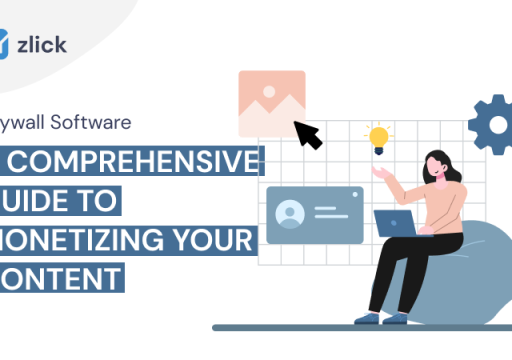Until recently, paywalls were primarily used by online press to create a stable and recurring revenue stream from their readers. However, today, paywalls have become more popular and are being utilized by a growing number of content producers, including digital natives, e-learning platforms, broadcasters, and brands.
Here we explore this question, concluding that it’s not a matter of choosing between a paywall or SEO, but rather about how content producers can minimize SEO risks while maximizing the benefits of a paywall.
Search engine optimization (SEO) for membership sites can be a daunting task. With the rise of paywalled content, publishers need to ensure that their gated content is still visible to Google and available to readers. In this article, we will discuss how to optimize paywalled content for search engines.
The Myth of Google’s 200+ Ranking Factors
While the 200+ ranking factors that Google uses in its algorithm may have been accurate when first mentioned over a decade ago by former Googler Matt Cutts, a lot has changed since then.
It’s unlikely that anyone knows the real number of ranking factors today. However, the main factors include high-quality content, mobile-first, page experience, page speed, on-page optimization, internal links and external links
So what does google see when it looks at a page that zlick is paywalling?
What it sees is no different than if there was no paywall at all as on every page we essential have rules that say “if you are googlebot or a paying user (user with our cookie saved on their pc) load the full page otherwise only load the preview section”
So, if its so easy to get around the paywall, why not pretend to be googlebot all the time so you can bypass the paywall – well some sites specialise in doing just that but in the case of zlick and our hard paywall we also check that IP matches googles known crawler IP so these sites often can still be blocked and in the case of zlick they are.
What Does Google Have to Say About Paywalled Content?
Implementing paywalls on your website can have significant implications for your search engine optimization (SEO). Here are some key factors to keep in mind when implementing paywalls:
- Provide some free content: Google recommends providing some content for free, even if you have a paywall in place. This can help improve your visibility in search results and attract potential subscribers.
- Use structured data: By using structured data markup, you can help Google understand the nature of your paywall and the content that is available to users. This can also help prevent content from being incorrectly marked as “cloaked” or hidden from Google.
- Avoid cloaking: Cloaking refers to the practice of showing different content to users and search engines. Google considers this a violation of their guidelines and can result in penalization.
- Consider a hybrid approach: A hybrid approach that combines a paywall with free content can help balance the need to monetize content with the need to attract and retain users.
It’s important to consider these factors when implementing paywalls to ensure that your website remains visible and accessible to both users and search engines.
Types of Paywall and how they affect SEO
Freemium
With the freemium model, some articles on the site can be accessed without a paywall, while some will have one. There’s no specific rule as to which content will be free and which will be premium, but usually, publishers use popular free content to leverage premium content and entice people to subscribe if they want to read a more in-depth article.
Metered
With metered paywalls, the visitor can read a limited number of articles per month before being asked to subscribe. This method is used by several prominent websites, including Medium, The New York Times, and others.
Lead in paywalls are a subset of Metered in that the viewer can see a portion of the article for free but must pay to read it all.
Hard Paywalls
With “hard” paywalls, all content is gated off. This typically means that content can’t be crawled or indexed by Google or other search engines. Obviously, this makes it much harder to get new signups, but if the content is of high value, the conversion rate can be much higher.
Dynamic Paywalls
A recent development in paywalls is the dynamic paywall, also known as a personalized metered paywall. This type of paywall uses software installed on the publisher’s website to deliver a tailored experience to each user. The software determines when a user is likely to sign up for a subscription and then presents a paywall form. The user is able to consume some free content before being blocked by the paywall. There are several variations of dynamic paywalls, depending on how the software is designed and implemented, but all involve profiling each user.
Balancing Free and Premium Content
Publishers can seek to find a balance between free and premium content or create exclusive content that readers are searching for but can’t get anywhere else. In other words, one can’t put just any type of content behind a paywall and expect it to do well in search.
Different blocking methods and their effect on SEO
Blocking methods are essential to understand when it comes to creating an effective SEO strategy. There are three main ways of blocking content: user-side with CSS, user-side with JavaScript, and server-side.
Frontal or user-side blocking methods involve hiding content from users when they visit a webpage. There are two main frontal content blocking methods: CSS and JavaScript. The CSS method is the easiest to implement and causes the fewest side effects. It involves hiding content with an overlay, and the article’s
This model is typically used by soft and metered paywalls as they need to load the content if you are first time viewer and only THEN they check if you should be able to see it or not based on if you have reached your free limit etc
Back or server-side blocking methods involve blocking content on the server side. This means that the content as a whole is never sent to the page, and the blocking occurs on the server side. In most cases, there are two pages on the server side: a full page and a cropped one. The cropped page is sent by default, and when the user gets the rights to access the content, a full page is sent. This method is safer but also more complex to implement. If it’s not correctly used, it can have the greatest impact on SEO because none of the content, aside from the title, is available on the page.
For a server-side block, if nothing is done, users (and Google) will only see the header, and only that part will be referenced.
However, there is a way to implement server-side blocking with SEO optimization which Zlick utilizes. This method works in the same way as the previous method, but the content is available to the Google Bot, either by allowing it through the paywall or via a structured data method. This means that the content will be more easily accessible to users, and the SEO impact will be minimized.
Other SEO considerations
Backlinks
As we know backlinks + traffic + better ranking signals but according to research conducted by Search Engine Journal, paywall articles are less likely to be cited and linked to as sources compared to free articles. This can have negative consequences for websites that use paywalls as a means of monetizing their content. When users want to cite a source and provide a link to it, free articles are generally preferred due to the better user experience they provide. This results in fewer links being accumulated by paywalled content, leading to a decrease in the site’s authority signals from external links over time. As Google still relies heavily on links for various authority-related ranking signals, this can ultimately impact a website’s ability to achieve top rankings in Google’s search results
.
Accelerated Mobile Pages
Although AMP pages seem to be losing flavor and slowly being phased out When it comes to paywalls publishers have faced significant challenges in ensuring the two technologies work seamlessly together. One major issue is that AMP, being a different tech stack from the publisher’s regular website, can disrupt the user experience by presenting paywall login forms even when a user is already logged in to the paywall on the main website. While there are technical solutions that can mirror the regular paywall on the AMP version of the website, they are often complex and difficult to implement. As a result, many publishers are moving away from AMP and focusing instead on improving their regular publishing websites.
Conclusion
Optimizing paywalled content for search engines is essential for membership sites. Publishers need to strike a balance between providing value to subscribers and making content visible to search engines.
The freemium, metered, and hard paywall models offer different benefits, and publishers need to choose the model that best fits their content and audience. Ultimately, by creating high-quality content and following Google’s guidelines, publishers can succeed in both
Determining which content blocking method to use for your website depends on various factors, including your business model and audience. According to Jessica Bowman, founder and CEO of SEOinhouse.com, server-side blocking is generally the preferred method for SEO, as it ensures that all content is available to search engines. Frontal blocking methods can also be effective, particularly for websites that rely heavily on ad revenue and have an audience that is less likely to bypass paywalls.
Its recommended to consider your audience’s behavior when deciding on a content blocking method. For example, if your audience is likely to be tech-savvy and experienced with bypassing paywalls, you may want to opt for a server-side method. Additionally, if you have a lot at stake concerning content protection or cybersecurity, server-side blocking may be the better choice.
Sources:
- “CSS or JavaScript: Which is Better for SEO?” by Erika Giles, Search Engine Journal, 2021, https://www.searchenginejournal.com/css-vs-javascript-for-seo/412745/
- “Types of Content Blocking” by Yoast, Yoast SEO, 2022, https://yoast.com/types-of-content-blocking/
- “Understanding Server-Side Rendering” by Steve Sanderson, Smashing Magazine, 2019, https://www.smashingmagazine.com/2019/04/understanding-server-side-rendering/


